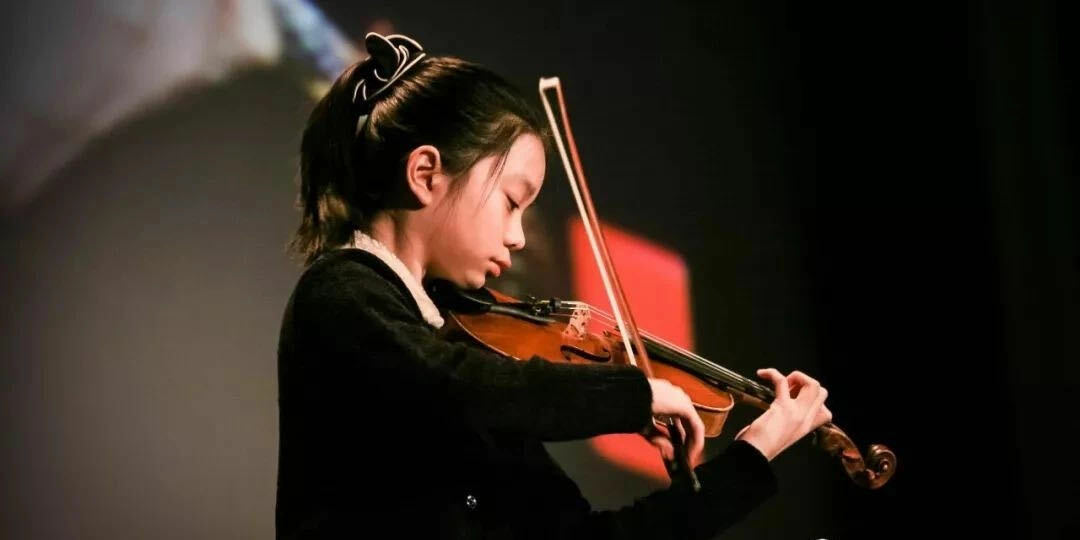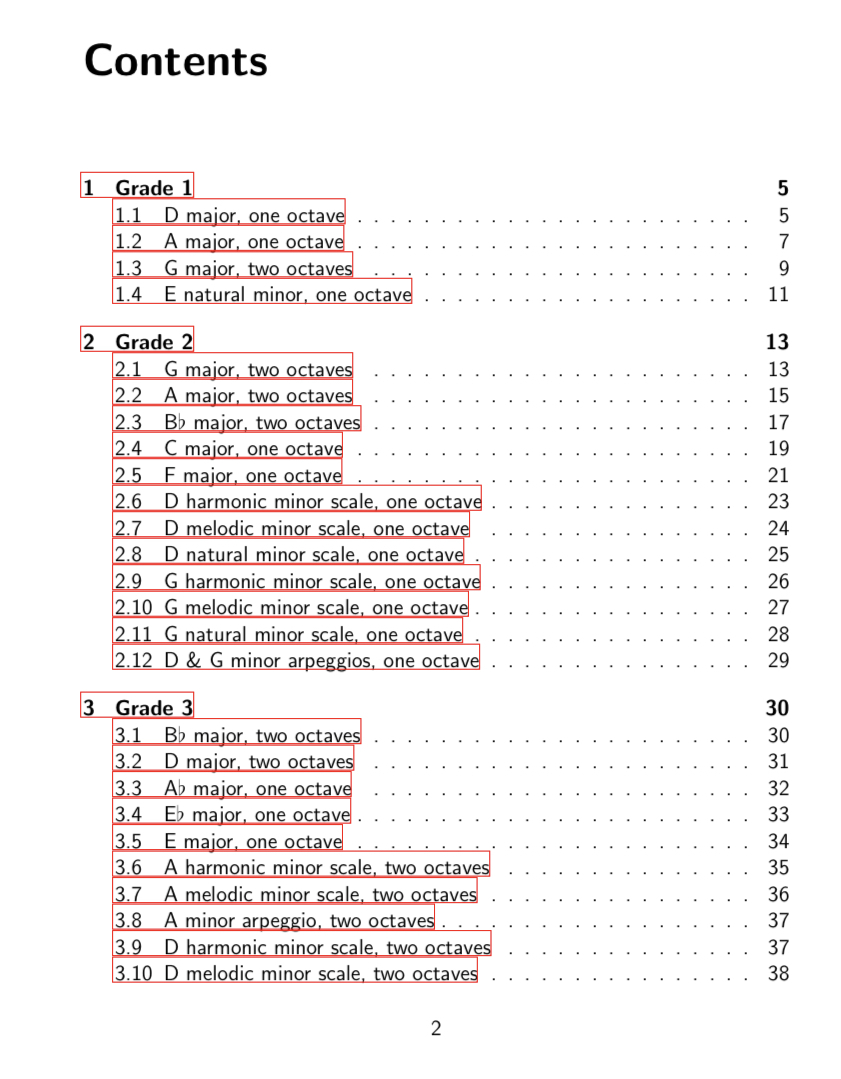拉小提琴,最枯燥最無聊的除了空弦,恐怕就數音階了。但又不能不拉,不能不練,即使業餘學琴,也要拉拉幾種常用調性的簡單音階。
專業學生更不用說了,不管你願不願意,一律都得練二十四個大小調音階,哪怕你硬著頭皮。小提琴音階如此重要,難怪海菲茲考查音樂學院小提琴學生時,不是聽他們高深著名的樂曲,而是聽他們的音階。
他不相信連音階都拉不好的學生能拉好複雜的樂曲。他反復強調小提琴演奏技術的基礎就是音階,希望學生拿出四分之三的時間來練習它們。
關於英皇的考級,我們要準備考級相應的調性音階以及琶音,分為分弓和連弓。
調性如圖目錄
那麼我們應該如何練習呢,把空弦作為固定音準是很好的音階練習習慣,不如D大調的音階,我們以D弦為基準。以下示範D調的音階,分弓。
連弓除了要保證音準,弓段的連貫性也要保障,在跨弦換弦時,右手手臂相應的抬高或者下垂,以幫助圓滑的換弦
琶音部分是在音階的基礎上,分解三和弦的練習。也分為分弓與連弓
音階的練習原則:
較之眾多的獨奏曲,小提琴音階看似簡單,其實有相當的難度。從調性、音域、速度、旋律與音程等方面,小提琴音階都有不同程度的技術要求。
縱觀中外小提琴各種音階教材,無論是國外的赫利美利、卡爾·弗萊什,還是國內的陳又新趙惟儉,我們都不難發現它們有一共同特點,那就是從單音階到雙音階,從簡單調性到復雜調性,從窄音域到寬音域,從分弓到連弓,從短分弓到長分弓,從慢速到快速。
無疑,我們探尋小提琴音階練習的訣竅或要點,首先也要遵循教材這一編撰原則,由淺入深由易到難,即先練簡單的調如C大調,先練一個八度,先練第一把位,等等。
其二,按照音階練習的總要求------音準、拍勻、音美,在練C大調單音音階時,就要在這三個方面下功夫,為其他的音階打下良好的基礎。要拉準音速度就要慢,耳朵要仔細聽,慢分弓拉,一弓一個音,均勻地拉準拍子,而且要避免雜音和噪音。
其三,練習長連弓(全弓)音階時,剛開始弓子也不要走得太快,音階上行和下行,除了利用弓子自然重量,要特別注意弓桿壓力以及弓與琴弦觸點的調整,以平衡音量和換弦換把帶來的音色變化。
其四,為促使聲音飽滿和勻稱,避免快弓丟音落音,有時可以撇開琴弓(弓不拉),光用左手按指,用心感受每個指頭的力量,並能聽見指落指板的聲音。這是一種訓練小提琴音階具有顆粒感的好辦法。
其五,任何調性的雙音階練習都務必安排在單音階之後,同時,雙音階下行要善於利用媒介音,但要避免讓它發出聲響。
***************************************************************
English version

Playing the violin, apart from the empty strings, the most boring thing is probably counting the scales. But you have to play and practice. Even if you are learning the piano as an amateur, you have to play several simple scales in common tones.
Not to mention professional students, whether you like it or not, you have to practice the twenty-four major and minor scales, even if you bite the bullet. The violin scale is so important, it is no wonder that when Heifetz inspected the violin students of the conservatory, he did not listen to their profound and famous pieces of music, but listened to their scales.
catalog of scale
So how should we practice? It is a good scale practice habit to use the open string as a fixed pitch. It is not as good as the D major scale. We use the D string as the benchmark. The following demonstrates the scale in the key of D, with separate bows.
In addition to ensuring the intonation of the bow, the continuity of the bow section must also be guaranteed. When changing strings across the strings, the right arm should be raised or lowered accordingly to help the strings be changed smoothly.
The arpeggio part is based on the scale and decomposes the practice of triads. Also divided into split bow and continuous bow
Scale practice principles:
Compared with many solo pieces, violin scales seem simple, but they are actually quite difficult. In terms of tonality, range, speed, melody and interval, violin scales have different technical requirements.
Looking at the various scale teaching materials for violin at home and abroad, whether it is foreign Helimeili, Carl Fleish, or domestic Chen Youxin and Zhao Weijian, it is not difficult to find that they have a common feature, that is, from monophonic scales to double-tone scales, from From simple tonality to complex tonality, from narrow range to wide range, from separate bows to slurred bows, from short separate bows to long separate bows, from slow to fast.
Undoubtedly, when we explore the tricks or key points of violin scale practice, we must first follow the compilation principle of the textbook, from simple to deep and from easy to difficult, that is, first practice a simple key such as C major, first practice an octave, and first practice First place, wait.
Second, according to the general requirements of scale practice --- intonation, uniformity, and beauty, when practicing the C major monophonic scale, we must work hard on these three aspects to lay a good foundation for other scales. Base. To draw the pitch, the speed must be slow, the ears should be listened carefully, and the bows should be drawn slowly, one note for each bow, and the beat should be evenly drawn, and noises and noises should be avoided.
Thirdly, when practicing the scales of long ligatures (full bows), don’t move the bow too fast at the beginning. In addition to using the natural weight of the bow when the scale goes up and down, pay special attention to the pressure of the bow stick and the adjustment of the contact between the bow and the strings. , to balance the volume and the timbre changes brought about by changing strings and handlebars.
Fourth, in order to make the sound full and well-proportioned, and avoid losing and dropping the sound of the fast bow, sometimes you can put aside the bow (the bow is not drawn), just press the fingers with your left hand, feel the strength of each finger with your heart, and hear the fingers drop. board sound. This is a great way to train violin scales to have grain.
Fifth, any tonality double-scale practice must be arranged after the single-tone scale. At the same time, the descending of the double-tone scale should be good at using the medium sound, but avoid making it sound.













